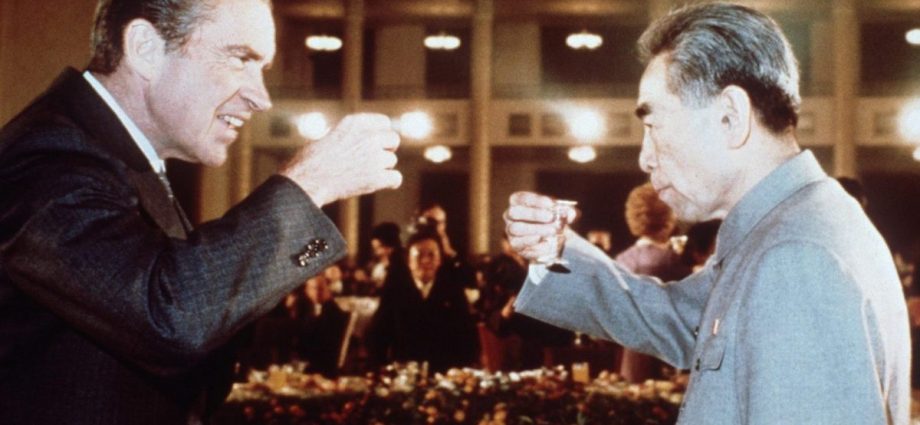
By flying to Asia and landing in Taipei, the Speaker of the US House of Representatives, Nancy Pelosi, disregarded the “one China” principle and the fact that Taiwan is a province of China. Pelosi stepped over China’s red line. And, as promised, China responded by holding live-fire drills all around the island for the first time in the history of cross-Strait relations.
The military exercises by the People’s Liberation Army prompted the aircraft carrier USS Ronald Reagan to sail away from the waters of Taiwan. This made it abundantly clear to the people in Taiwan that while the United States wants to encourage Taipei to start a war with the mainland, Taiwan would have to fight the PLA by itself.
Seeing these developments, the collective wisdom of the people in Taiwan as reflected by the media is to conclude that to declare independence and break away from China would be suicidal.
The US Congress and President Joe Biden’s administration, however, have continued to test China’s resolve and attempt to push the red line.
Since the US and the People’s Republic of China (PRC) normalized relations in 1979, Congress has enacted a series of legislation to weaken the bilateral agreement progressively as expressed by three communiqués.
The first communiqué was agreed in 1972 when then-US president Richard Nixon went to China. Each communiqué stating that Taiwan is a part of China was signed by both Washington and Beijing and is binding on both parties.
Unlike these joint agreements, the US government arrogantly presumes that any law enacted by its Congress is unilaterally binding on China as well.
In response to this American arrogance, the State Council Information Office in Beijing has issued a white paper on the “Taiwan Question and the Cause of China’s Reunification in the New Era.” This important document is obviously intended to remind the West that China will not budge on its position on Taiwan.
First of all, the paper reiterates that Taiwan is part of China, that reunification is inevitable, that the way reunification will take place is a matter between Taiwan and the mainland, and that Beijing will brook no outside interference. This is a re-statement of the red line about Taiwan that has never changed but is now stated in no uncertain terms.
Second, the white paper reviewed Taiwan’s place throughout the history of China. The terms of Japan’s unconditional surrender at the end of World War II mandated the return of Taiwan to China after 50 years of Japanese occupation.
At present, 181 countries including the US recognize the PRC as the legal government of China and that Taiwan is part of one China.
Advantages of being part of China
Some people in Taiwan may not fully appreciate the intertwined cross-Strait economic relationship. If so, they should read the white paper and understand the advantages of Taiwan being a part of the national economy.
As just one of the indicators, Taiwanese businesses have over the years invested more than US$71 billion in more than 1.2 million projects on the mainland – not to mention an annual trade surplus of $170 billion that Taiwan enjoys with the mainland.
From 1980 to 2021, the mainland’s economy grew three times as fast as Taiwan’s and has become the second-largest in the world, and is soon to overtake the US to become No 1. China has become a major power not only economically but in science and technology and in military prowess. As more people in Taiwan come to understand China’s place in the world, they will appreciate being a part of China.
Winding through Congress is the Taiwan Policy Act of 2022, which according to its sponsors will promote the security of Taiwan, ensures regional stability and threatens China with broad economic sanctions. But the consequences of Pelosi’s visit to Taiwan showed that such an act will do just the opposite: The island will become less secure and the region less stable.
As we have also seen from the Ukraine war, the US sanctions imposed on Russia backfired badly, causing worldwide food shortages, rising energy prices and overall inflation, and solidified the ruble’s place among the world’s major currencies. Any attempted sanctions on China would inflict blows to the US economy many times more serious than the sanctions on Russia.
One only need look at the foolhardy tariff war waged by former US president Donald Trump and continued by Biden. The American consumer had to pay a higher price for goods made in China because of the tariffs, and the trade surplus by China only increased rather than reduced. For Washington to threaten China with sanctions is meaningless if not just stupid.
Moreover, the white paper has reasserted China’s red line on Taiwan, leaving no room for ambiguity or equivocation. This is a matter of sovereignty for China. The Chinese do not make empty threats. They will view stepping over the line as an act of war.
No independence without US support
Taiwan’s ruling pro-independence (taidu) faction would not be so foolish as to declare independence without US support. If the US does show support, then China will most likely strike at the US naval ships first and take them out of action.
Without American military presence, the taidu faction will become irrelevant and negotiations between Taiwan and the mainland for a peaceful reunification can begin.
George Koo retired from a global advisory services firm where he advised clients on their China strategies and business operations. Educated at MIT, Stevens Institute and Santa Clara University, he is the founder and former managing director of International Strategic Alliances. He is currently a board member of Freschfield’s, a novel green building platform. Follow him on Twitter @george_koo.

